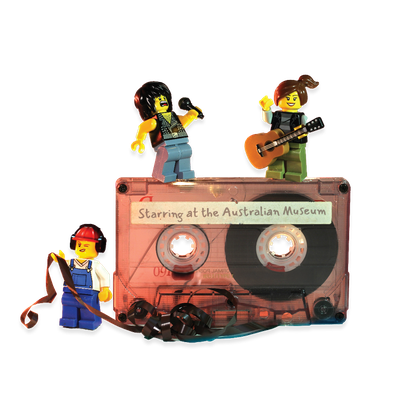Your search returned 12424 results
By Page Type
By Tag
- fish (966)
- blog (696)
- fishes of sydney harbour (401)
- First Nations (297)
- Blog (236)
- AMRI (169)
- archives (164)
- Eureka Prizes (145)
- Aboriginal and Torres Strait Islander (135)
- insect (126)
- Ichthyology (124)
- geoscience (109)
- minerals (102)
- climate change (99)
- podcast (94)
- Fish (91)
- Anthropology (89)
- International collections (80)
- Minerals Gallery (78)
- wildlife of sydney (78)
- Labridae (77)
- frog (73)
- gemstone (70)
- photography (65)
- history (63)
- Mollusca (60)
- gem (59)
- staff (59)
- Birds (56)
- Gems (56)
- Indonesia (56)
- education (55)
- shark (55)
- AMplify (54)
- people (53)
- earth sciences (50)
- past exhibitions (50)
- exhibition (49)
- Gobiidae (48)
- sustainability (46)
- Pomacentridae (45)
- Serranidae (44)
- lifelong learning (42)
- science (42)
- Earth and Environmental Science (41)
- Syngnathidae (41)
- Ancient Egypt (40)
- Bali (40)
- bird (40)
- dangerous australians (40)
-
Citizen scientists document frog species richness across Australia
https://australian.museum/learn/news/blog/citizen_scientists-document_frog_species_richness/FrogID data accurately predicts expert-derived frog species richness across Australia
-
Tips for taking your FrogID submissions to the next level
https://australian.museum/learn/news/blog/tips_for_frogid/Want to make the most of you FrogID recordings? Here's some tips!
-
Over 40 years in the making: the two new subspecies of Rock-wallabies
https://australian.museum/learn/news/blog/two-new-subspecies-of-rock-wallabies/Although commonly seen by tourists around Alice Springs, the Rock-wallabies of Central Australia have lacked an appropriate scientific name … until now.
-
Finding a frog’s voice in the name of conservation
https://australian.museum/learn/news/blog/finding_a_frogs_voice/Frog species are often best distinguished by their calls, so we’ve recorded and published the call of the Jingdong Horned Toad for the first time.
-
Congratulations to Dr Val Attenbrow for the highest award in Australian Archaeology!
https://australian.museum/learn/news/blog/dr-val-attenbrow-highest-award-australian-archaeology/The highest award offered by the Australian Archaeological Association (AAA) has been awarded to Australian Museum’s Dr Val Attenbrow. Congratulations to Dr Attenbrow!
-
Data for conservation: over 50,000 FrogID records now online!
https://australian.museum/learn/news/blog/frogid_data_for_conservation/The FrogID dataset: the first year of expert-validated occurrence data has now been published!
-
Bloodlust for Conservation: iDNA an innovation in the search for elusive frogs
https://australian.museum/learn/news/blog/idna-search-for-frogs/A new, DNA-based frog survey technique means bloodsucking insects can help scientists find and conserve threatened frog species.
-
The isolated Yellow-footed Rock-wallaby populations of today, were once connected
https://australian.museum/learn/news/blog/yellow-footed-rock-wallaby-once-connected/Although populations of the threatened Yellow-footed Rock-wallaby are now patchily distributed across the mountain ranges of the southeastern Australian semi-arid zone, a new genetic study has revealed evidence of historic connectivity.
-
Weird and wonderful larva explained
https://australian.museum/learn/news/blog/weird-and-wonderful-larva-explained/A strange beetle larva was brought to the Australian Museum. It turned out to be only the third collection of its family in Australia and a new species!
-
Discover more
2025 Australian Geographic Nature Photographer of the Year
Special exhibition
Now open -
Discover more
Unfinished Business
Special exhibition
Now open -
Discover more
Wansolmoana
Permanent exhibition
Open daily -
Find out more
Burra
Permanent kids learning space
10am - 4.30pm![]()
-
Discover more
Minerals
Permanent exhibition
Open daily![]()




